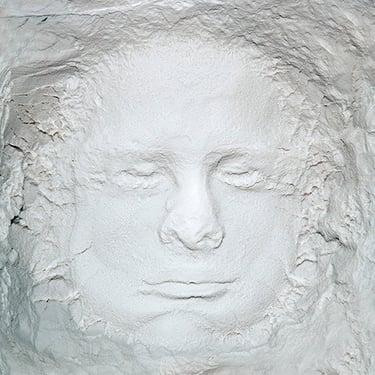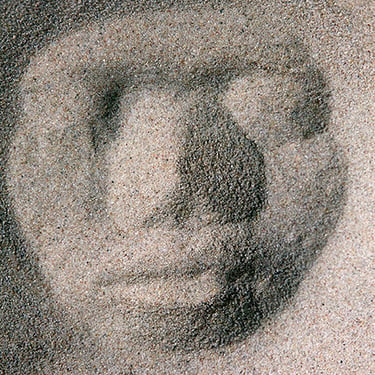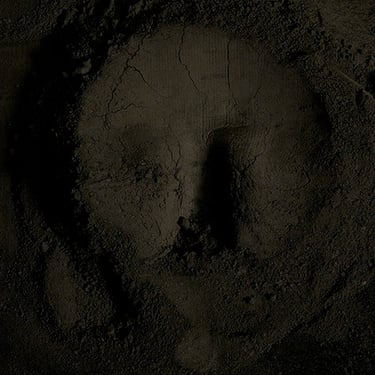Golem



Golem is an installation inviting an imaginary journey and reflecting on the desire and power of creation. Inspired by the Jewish myth, the Golem—meaning "formless" in Hebrew—is an artificial being made of clay and animated by the Word. The work features three pillars, each displaying a 40×40 cm print illuminated by spotlights, where human faces emerge from natural materials like flour, sand, or black pigment.
The installation’s semi-dark environment evokes a sacred space, with the pillars acting as “axis mundi” connecting us to another dimension or era. Viewers are invited to lean forward, echoing the posture of the original models, engaging with the imprints as corporal memory—traces of the body’s weight and presence.
The interplay of light, texture, and blurred versus sharp areas gives the faces a tangible presence, sometimes appearing as masks or alive entities. Textured paper enhances the tactile and sensual experience, encouraging viewers to explore visually and imaginatively.
These traces serve as a metaphor for photography, capturing moments in time while exploring the limits of the photographic index. Through repeated transformations, the images gradually transcend their original referents, approaching an acheiropoietic quality—divine, relic-like images that evoke both nearness and distance, reminiscent of Walter Benjamin’s notion of aura.
Digital Photography, Installation, 2016
Golem est une installation qui invite à un voyage imaginaire et à une réflexion sur le désir et le pouvoir de création. Inspiré par le mythe juif, le Golem — qui signifie « informe » en hébreu — est un être artificiel façonné en argile et animé par la Parole. L’œuvre se compose de trois piliers, chacun présentant une estampe de 40×40 cm éclairée par des projecteurs, où apparaissent des visages humains créés à partir de matériaux naturels comme la farine, le sable ou le pigment noir.
L’ambiance semi-obscure évoque un lieu sacré, les piliers agissant comme des « axis mundi » reliant à une autre dimension ou époque. Le spectateur est invité à se pencher, reprenant la posture des modèles originaux, et à percevoir ces empreintes comme la mémoire corporelle du poids et de la présence du corps.
Le jeu de lumière, de textures et de zones floues ou nettes confère aux visages une présence tangible, parfois masquée ou animée. Le papier texturé amplifie l’expérience tactile et sensuelle, incitant le regard à explorer et caresser l’image.
Ces traces deviennent une métaphore de la photographie, capturant un instant tout en explorant les limites de l’index photographique. Par transformations successives, les images dépassent leur référent initial, approchant d’une qualité acheiropoïétique — des images divines et reliques évoquant à la fois proximité et distance, rappelant la notion d’aura de Walter Benjamin.